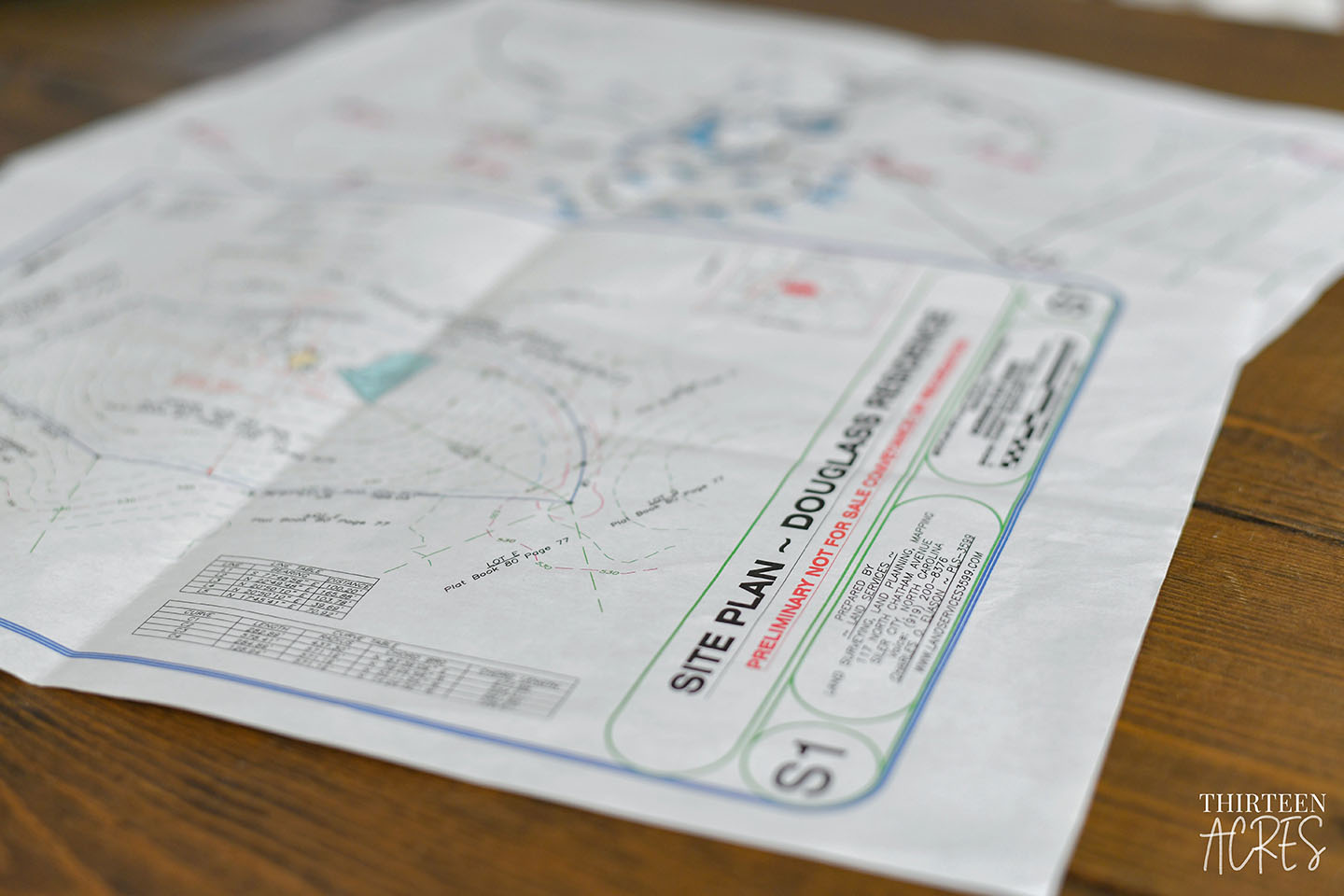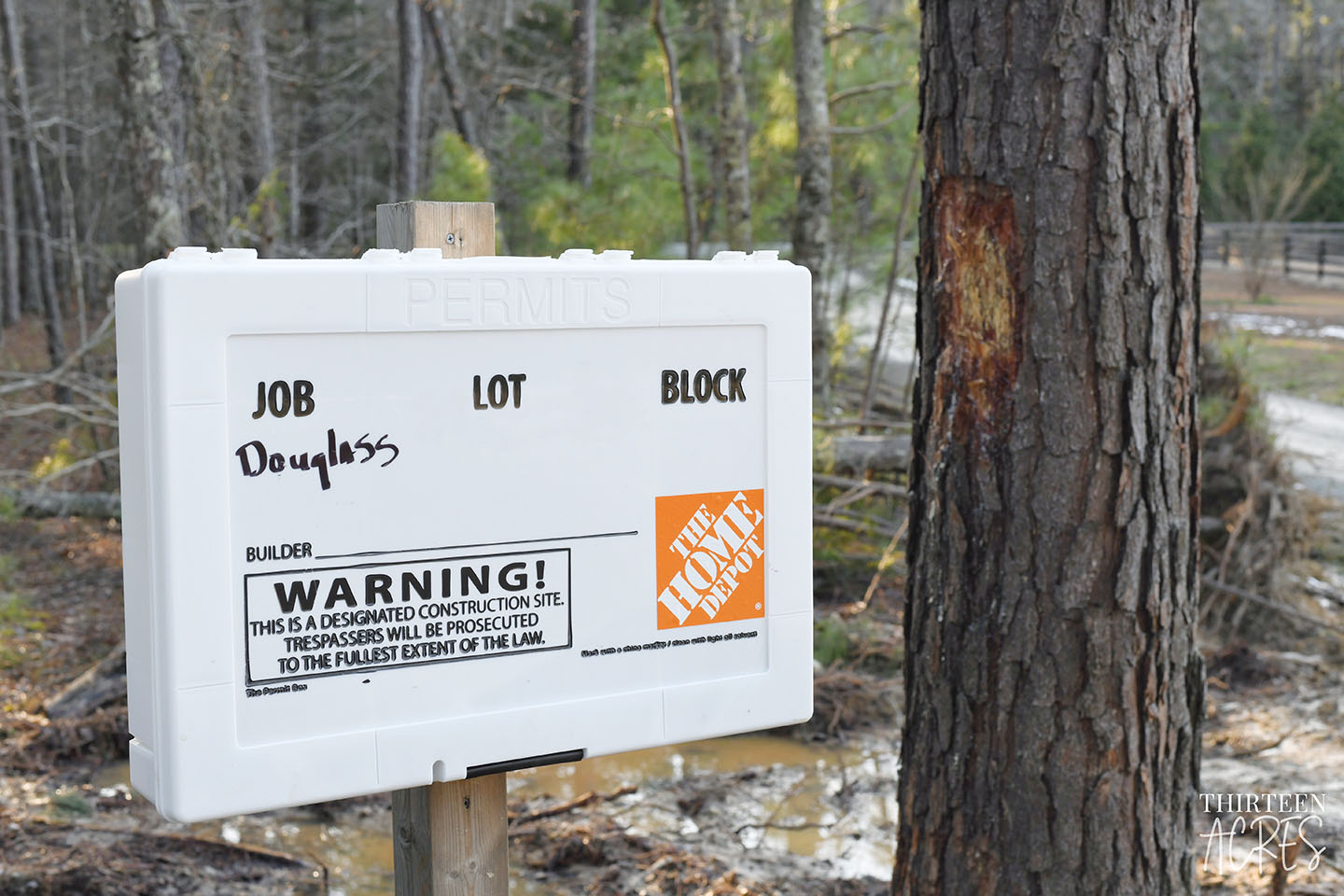Thirteen Acres is supported by our readers. When you buy through links on our site, we may earn an affiliate commission. As an Amazon Associate, we earn from qualifying purchases.
There's so much that goes into building a house before you even start building. We spent a long time deciding what we wanted in a custom home and almost a year looking for the land we wanted to put our house on. We then spent another eight months working with our builder before breaking ground on our new home. By the time we move in to our house, we'll have probably spent over three years working through the building process. In this post, we'll talk about those eight months in between buying land and starting our build and what we would have done differently if we were to do it again.
To start, we had to figure out our final design. We had a general idea of what we wanted in a house when we approached our builder. We knew we wanted the farmhouse look and had an idea of the square footage, number of rooms, and features we were looking for. We gave our builder a few floor plan ideas and layouts and our builder did his best to determine how to fit all the right features into the final plan. As our builder sent us each iteration, we would make small adjustments. We saw our vision start to come to life. We also noticed little things that could make our life easier, like moving the pantry to get a more straight shot from the garage to the pantry when bringing in groceries. With each iteration, a couple more ideas would pop up that would add time to the process. If we had to do it all over again, we could have probably saved some time by starting this process before ever closing on our property.

Once the engineered drawings were complete we had to go through the permitting process, which, for us, included obtaining a septic permit, a well permit, and a construction permit. Keep in mind that not all builds will follow this formula exactly - we needed a septic tank and well, but you might not. There are a number of things that our builder did for us during this process, but he did ask that we request the septic and well permits (since the office in our county is nicer to the taxpayers). The county needed a couple things from us, like a site plan to see the proposed locations of everything. One advantage to the property we purchased was that it already had two septic permits on file, and both were "non-expiring," so we expected it to be a fairly straightforward process. Since one of the approved permits was in the general vicinity of where we wanted to put the house, we decided to save money by using the existing permit. Unfortunately, it wasn't all smooth sailing from there and using the existing permit actually added some complexity to the equation.
Apparently non-expiring permits aren't a thing in our county anymore, so it created a bunch of confusion. The permit that was on file had no real measurements (it was old...maybe they didn't care that much back then), so it made it quite difficult to try and make sure our site plan aligned with the existing permit. Perhaps it may have been quicker to just pay for the new permit, but we had already made the decision and we had already waited a couple weeks for the process by the time we realized how much confusion it was causing.
The process, even though we had the permit, still involved the county going out to verify the location of the house after our builder marked it off and doing their due diligence to make sure we were doing things properly. Much to our surprise, a couple weeks later we got a denial email. Unfortunately, the permit office was confused and thought we wanted to use both of the non-expiring septic sites, even though we had gone over using only one of them. Once we clarified it again over the phone, it took another week or so to actually get the approval. All-in-all, the permit process turned out to be pretty complicated for us and we'd recommend planning for this process to take some time. It was a bit frustrating and felt like it took longer than it should, but we've found that to be a recurring theme in building a house - and we still think it's well worth it.
Once all the permits were approved on our end and the builder's end, our final pre-construction step involved finalizing the contract and getting a loan. Our builder provided us a final contract, which we reviewed closely to make sure as many details as we could think of were written down. This is quite important because if it's not in writing, you shouldn't expect it to be in your house when it's complete. That's not to say the contract will have everything. There will almost certainly be something you miss and end up having to pay for during the build. Much like any home project, you should expect the unexpected and plan some overage into your total budget.

While we were working through the final details with our builder and the contract, we also engaged the bank in parallel. We had already visited a couple banks around the same time we started meeting with builders to get an idea of the process they followed, so we had already decided on the bank we were using well in advance.
TIP: There are some banks that have dedicated construction loan teams, who have experience with this type of loan. If you're having trouble finding a bank that offers a construction loan or you don't know where to start, check with your builder, who may be able to recommend a bank that their other clients have used. Banks who deal with construction loans frequently may offer a more well-defined plan designed to protect the bank as well as the customer. For example, our bank did six inspections over the course of the build and only paid out to the builder based on work completed (and after our approval). We also appreciated loan features like the construction loan interest rate lock: at the beginning of construction the rate was locked and it will never go higher. However, if rates are lower once construction is complete, the rate can be locked at the new, lower rate.
The bank was able to start some initial paperwork so that by the time we got the final contract signed, we were able to send it to them immediately. Even though there's not a home inspection or traditional steps that you'd follow to buy an existing house, the loan process still took us about a month. They do still visit the land, look at the plans, and estimate what they think the total value of the house will be once it's complete based on the surrounding area and the proposed plans. This process actually went very smoothly for us because we did go with a bank that has a dedicated construction loan office and our loan officer was extremely responsive. We also did our best to have everything organized and together for them as soon as they needed it.
The entire pre-construction process is a bit daunting and can feel like it takes forever. At times, it doesn't feel like much progress is being made because you're not seeing anything happen. Getting an email that your septic tank has been approved isn't particularly exciting in the grand scheme of things. For us, it definitely felt like the longest part of the process as we waited anxiously to get started. The good news is that once you get through this phase, the next step is breaking ground and it only gets more and more exciting from there!

Comments